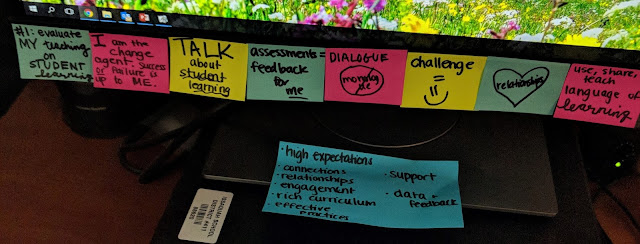Over the course of this quarter, my confidence in using and
naming instructional strategies has drastically increased. While I already had knowledge of many of
these strategies under my belt prior to taking this course and used them frequently,
I was not in a position to effectively teach them to others or even collect
data on them within my own teaching. One
of the most powerful pieces to my learning in this course was being able to put
a name to the strategies that I’ve previously found successful within my own
teaching. With now having the increased
knowledge of names of instructional strategies, areas in lessons and units that
they are most effective, and an ability to take data of them, I am able to have
meaningful conversations with other educators.
I also have more tools for my teacher leader “toolkit” as far as guiding
teachers to effective, research based strategies that help further student
learning.
In addition to the deep dive into specific strategies, I have
come away with a better understanding of an inquiry model when conducting a
PD. While I have experienced this model
from a participant perspective and have even been a part PD collaborations with
other educators when helping teach specific things within my building, I had
never truly been on a creating end of it.
After having the inquiry model “spelled out” for me and attempting to
put it into action, it gave me a better understanding of how effective
conducting teacher education in this model can be.
Finally, I have more confidence with providing positive and
constructive feedback to other educators.
This course allowed me to use the information I had about coaching and
actually implement it while giving feedback to peers. Not only was it so valuable to get a peek
into others’ classrooms through video lessons, but it was great practice
looking for specific instructional strategies and giving data based feedback.

Comments
Post a Comment